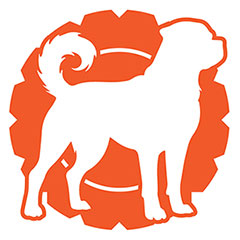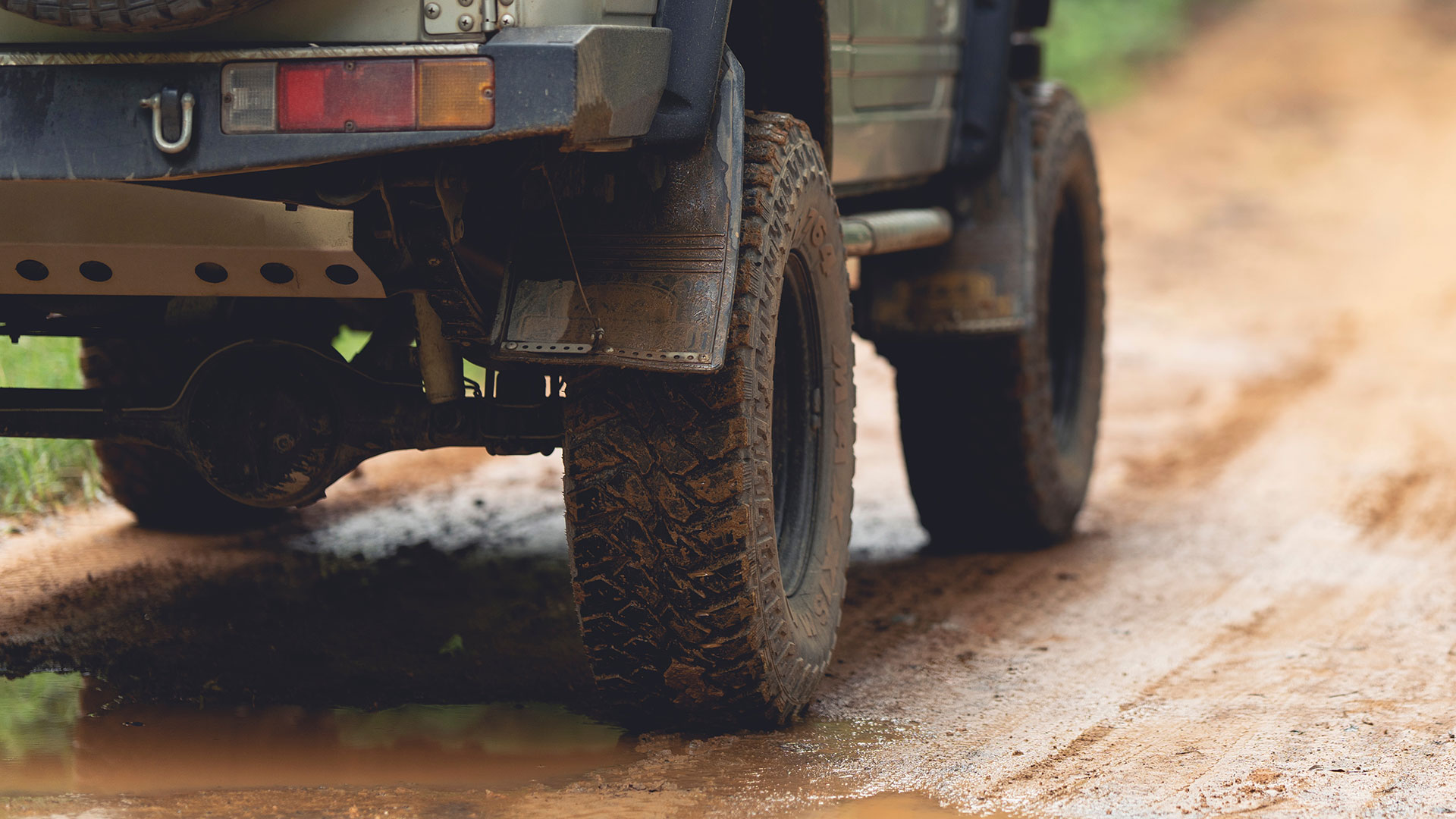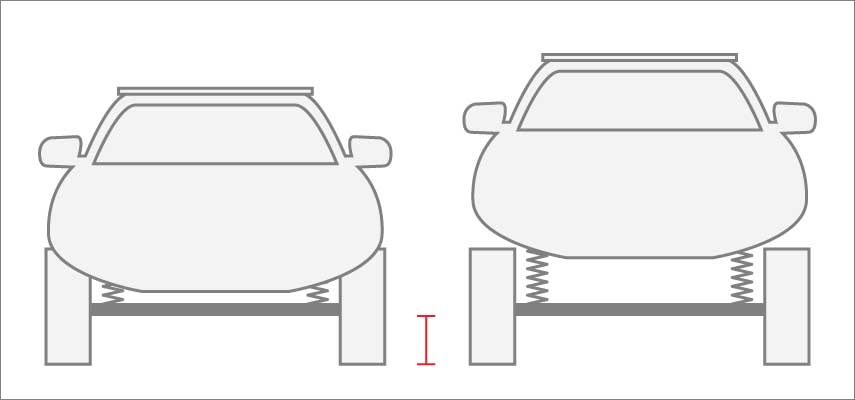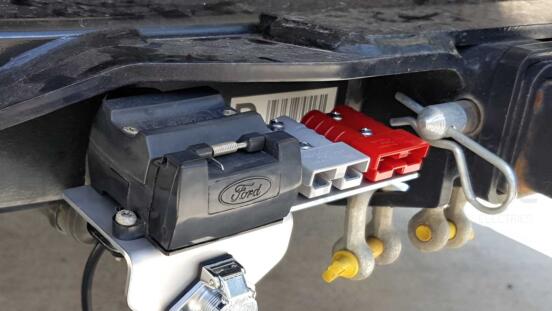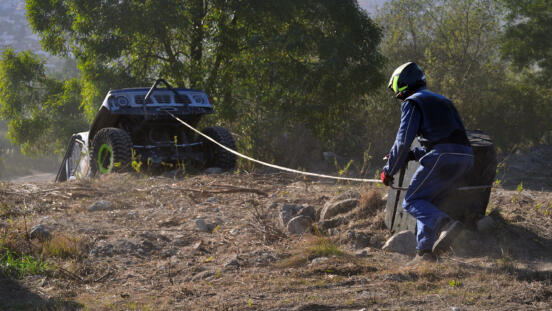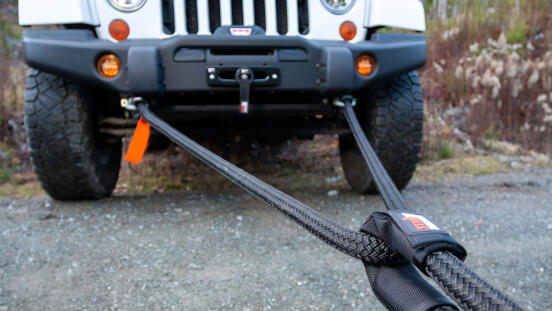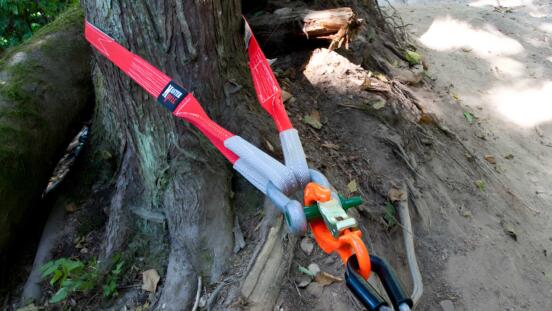35-inch tires are basically the poster child for off-roading. Do a Google search for 4WDs and you’re guaranteed to get pictures of rigs off-road on 35" tires, showing off some flex.
Why DO you want 35” tires?
Some wheelers just want them for looks; there’s no denying that on a four-wheel-drive intended for off-roading, 35” look the part. The real advantage of moving to a larger tire though is raising your axles.
A standard lift kit works by raising the body/frame of the vehicle, by replacing suspension components, e.g. longer shock absorbers, and taller springs (often with higher pre-load to stop the vehicle from sagging under the added weight).
But no matter how high you raise your suspension, your axle remains the same distance from the ground.
Increasing your tire diameter from 31"to 35" - 4 inches - effectively gives you a 2" suspension lift. You get half the increase size as a lift, because the tires increase in size in all directions, compared to the factory 31" the tire is now 2" higher from the axle at the top, and 2" further from the axle at the bottom, creating the lift.
The same applies to any other size change e.g. going from 31"to 33" gives a 1" lift, and so on.
There is some argument to be made for increasing the contact patch of your tires by going up in size, but raising the axles is the first and foremost benefit.
That’s not to say that a lift kit is pointless. Raising the frame reduces the chance/severity of other areas of the vehicle bottoming out on uneven terrain or in ruts, and increases the clearance of potentially vulnerable engine and (some) driveline components further from potential sources of ground damage, e.g. pointy rocks. You’ll also be less likely to damage side steps and body panels.
Why you DON’T want 35” tires.
It varies between makes and models, but most four-wheel drives will come with around 31” size tires from the factory. Some do have larger ones as stock, but 31” is common.
While raising your axles is great, there’s no such thing as a free lunch, and increasing your tire size comes with a number of drawbacks, and significant costs for addressing issues if you want to “do it right”.
Your wheels function as a final gear in your driveline. Moving to a larger tire has the effect of making this gear longer, which has a number of potentially major negative impacts. These include:
Reduced torque:
You will lose torque output as a result of this final gear lengthening. This is an undeniable negative for rock-crawling and off-roading where you want low-down torque and control.
Reduced braking performance:
Mirroring the above, larger tires have the effect of giving the wheel/road more torque against your brakes when applied, reducing your vehicle's braking performance.
Fuel economy:
There are some arguments around driving style or reduced cruising RPM that potentially make this a moot point, but as a rule of thumb larger tires tend to have increased rolling resistance when compared to their smaller counterparts, and will always be heavier. Both of these factors will increase fuel usage.
Speedometer discrepancy:
Your speedometer is calibrated to your factory wheel size. On 31” tires, one rotation of your axle will move you 97” forward. On 35” tires, one rotation of the same axle will move you 110” forward.
Without recalibration, your speedometer will not be aware of this change; you will be moving around 13% faster than what your speedometer reports (speeding ticket, anyone?).
Suspension and body modifications:
On the majority of vehicles, you simply can’t change to 35” tires without vehicle modification because they just won’t fit. At a minimum, a suspension upgrade will almost certainly be needed, and in many cases at least some modification to the wheel well liners, fenders, bump stops, and/or body of your vehicle.
Reduced articulation, turning radius, and scrubbing:
Larger tires obviously occupy more space within the wheel well. Even with all of the previously mentioned modifications, some level of reduced articulation, turning radius, or scrubbing is common.
Cost:
A 35" tire could be as nearly double the price of your factory 31". More tire and smaller manufacturing numbers make them expensive.
Availability (especially in remote locations):
Tire stores typically don't have piles of 35" inventory lying around. In routine maintenance replacement, this is no big deal as you've got time for the shop to order whatever you'd like, but destroying a tire while traveling in regional or remote areas is going to put a dent in your travel plans if you have to wait days for the local shop to receive a replacement.
The more common 31" are far more likely to be readily available, wherever you find yourself in need of one.
What’s to be done about all this?
Reduced torque, braking, fuel, and speedometer issues - These can all be fixed at once by changing your diff ratio to suit the larger tires, but this could be anywhere from $1,500 - $2,000 or more. Not exactly loose change.
Suspension - It would be fair to argue that a suspension upgrade isn’t really an additional cost; If you’re at the point of looking at 35” tires, upgrading your suspension for its own sake is sure to be on your to-do list regardless. But, going from 31” to 35” tires will almost certainly require additional hardware than a standard lift kit. Upgraded control arms/radius arms, extended drive shafts, and more... all additional costs over what a standard lift would typically require.
Weight - You’ve just got to lug it around. This is the most minor of the issues, but it must be noted that larger tires will be heavier; more weight eating up your precious GVM limit. Staying under your vehicle's legal GVM is often a tricky task with many four-wheel-drive builds, especially equipment-laden tourers, and adding heavier tires only adds to this.
Heavier tires also add to your vehicle's unsprung weight, which can negatively impact handling.
All that said, none of this is intended to dissuade anyone from moving to 35"s. It’s not to say that it’s not a worthwhile upgrade to your off-roader, but if it is something that interests you, be prepared for a significant investment and additional work.
Unless you're doing very challenging off-roading, it's money and time you might get more satisfaction from investing elsewhere in your vehicle.
# Four wheel drive tires, tire size for off-roading, 31" vs 35" tires, modifications to fit 35" tires, downsides to fitting 35" tires, best 4x4 tire size.
